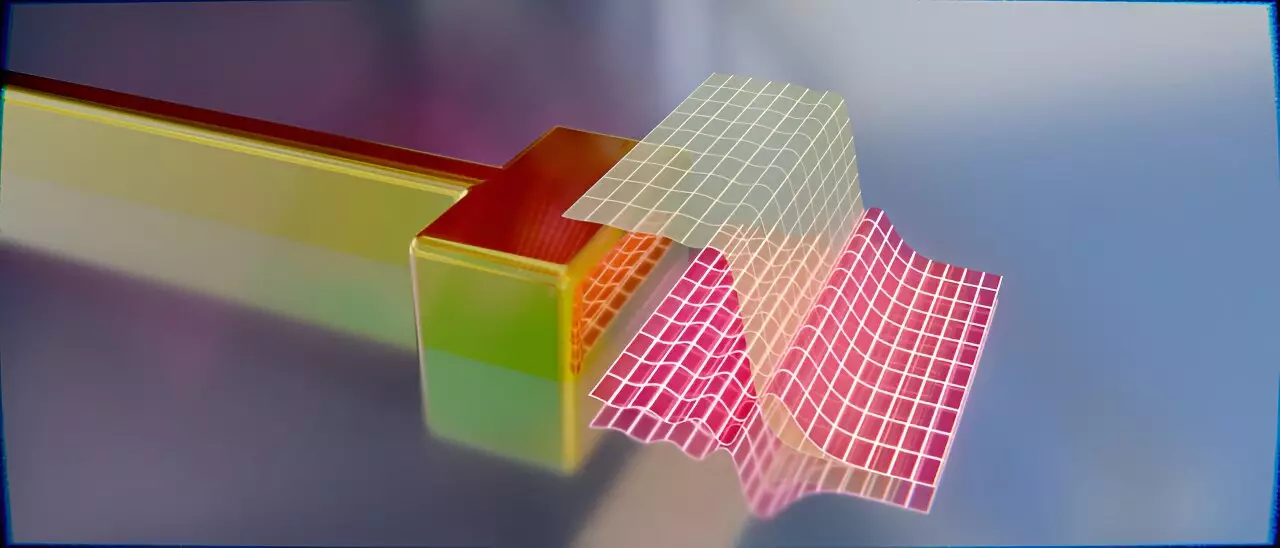As we traverse deeper into the age of digital technology, it becomes increasingly clear that conventional electronic computers are reaching a threshold in terms of speed and efficiency. Present-day semiconductor technology operates at the limit of its capabilities, maxing out at frequencies of just a few gigahertz. This translates to a staggering number of operations per second, often described in the billions. Despite this impressive performance, the inability to further increase the speed of individual chips requires modern computing systems to distribute tasks across multiple chips. This reliance on parallel processing is a temporary workaround, but it highlights an urgent need for more revolutionary advancements in computing technology.
Photonics: A Game-Changer for Computational Speed
Could the answer to the performance bottleneck lie in a paradigm shift from electricity to light? Researchers believe that employing photons instead of electrons could unlock a new frontier of speed, with the potential for optical systems to operate up to 1,000 times faster than their electronic counterparts. This could redefine the landscape of computer architecture, offering opportunities for significantly enhanced performance. Among the promising technologies pushing this shift are plasmonic resonators, often referred to as “antennas for light.” These intricate nanometer-scale metal structures facilitate the interaction between light and electrons, opening the door to unprecedented speeds as long as effective modulation techniques can be developed.
Currently, the major obstacle hindering the practical application of plasmonic resonators lies in the challenge of modulation. Unlike traditional transistors used in electronic devices, which can be manipulated to switch on and off, plasmonic devices have not achieved a comparable level of controllability. This limitation has stifled the potential of light-based switches and, consequently, the advancement of ultra-fast computing. Recent efforts led by a research team at Julius-Maximilians-Universität Würzburg in collaboration with Southern Denmark University have made strides in overcoming this barrier through innovative approaches to modulating light antennas.
Rather than attempting to alter the entire resonator, the researchers have taken a focused approach to modulate the resonator’s surface properties. Utilizing a gold nanorod, the team achieved electrically controlled modulation by creating direct electrical contacts with the resonator. While this concept may seem straightforward, its execution required highly advanced nanofabrication techniques involving helium ion beams and the manipulation of gold nanocrystals—a process honed at the university’s experimental physics department. This meticulous method has made it possible to oversee changes in the resonator’s surface that can vastly improve its operational capabilities.
The research reveals that classical physics can only partially explain the phenomena observed at the nanoscale. Traditionally, it was understood that electrons would simply stop at the edges of metallic nanoparticles. However, groundbreaking measurements from the Würzburg scientists illustrate a more complex interaction, wherein electrons exhibit a “smeared” distribution across the boundary between metal and air, akin to the gradual transition from land to sea on a sandy beach. This newly discovered behavior transcends conventional explanations, prompting theorists to develop a semi-classical model reconciling classical and quantum dynamics.
A Unified Approach to Quantum Effects
This semi-classical model is groundbreaking as it enables researchers to mathematically manipulate these complex quantum effects without completely abandoning the established classical methodologies. This serves not only to clarify the behavior of surface electrons but also to pave the way for the targeted design of new antennas, allowing specific quantum effects to be amplified or minimized. The implications of this model are profound, providing scientists with tools to further enhance performance in optical technology.
Future Implications: Expanding Horizons
Looking ahead, the researchers envision their work leading to a myriad of applications in real-world technology. Smaller, more efficient resonators could serve as highly effective optical modulators, transforming their use in various technological sectors. The exploration of surface electron behavior also presents exciting prospects in the realm of catalysis, where a deeper understanding of electronic interactions could drastically improve energy conversion and storage technologies.
The journey toward quicker, more efficient computing is at the precipice of a revolution fueled by light. With breakthroughs in plasmonic resonance and innovative modulation techniques, we are beginning to glimpse a future where computing is not solely defined by electrons but instead embraces the remarkable potential of photonics. As research continues to unfold, the day when light outpaces electricity may be closer than we think, setting the stage for a new epoch in technological advancement.

